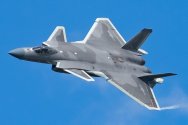There is no way for satellites to provide the altitudes of the targets.
That entirely depends on the density and overlap of the satellite constellation and the extent of networking. Altitude should absolutely be doable when multiple satellites all over overlapping coverage of the same airspace with each other.
I read that the fidelity is good enough in the XY plane but not sufficient in the Z axis. You could be potentially off by a magnitude of kilometers.
For a modern BVRAAM seeker that's fairly doable.
I'm also not sure if you're referring to satellites or AEW&C here. If it's the latter, well we know AEW&C play a fairly key role as part of the sensor shooter complex for modern PLA BVRAAMs so it should be considered sufficient for at least certain target sets.
===
As for the overall question about using satellites to provide midcourse guidance quality AMTI, the question was fundamentally future oriented to begin with -- i.e.: it is about a capability which doesn't exist today, but may exist in the future.
The technology for satellite based AMTI is there, and the rockets are there to launch super constellations as well. It entirely just becomes a matter of cost for the hardware and the networking, but the only true answer to the question "is it possible" is "yes it can be possible, but not with present technology".

